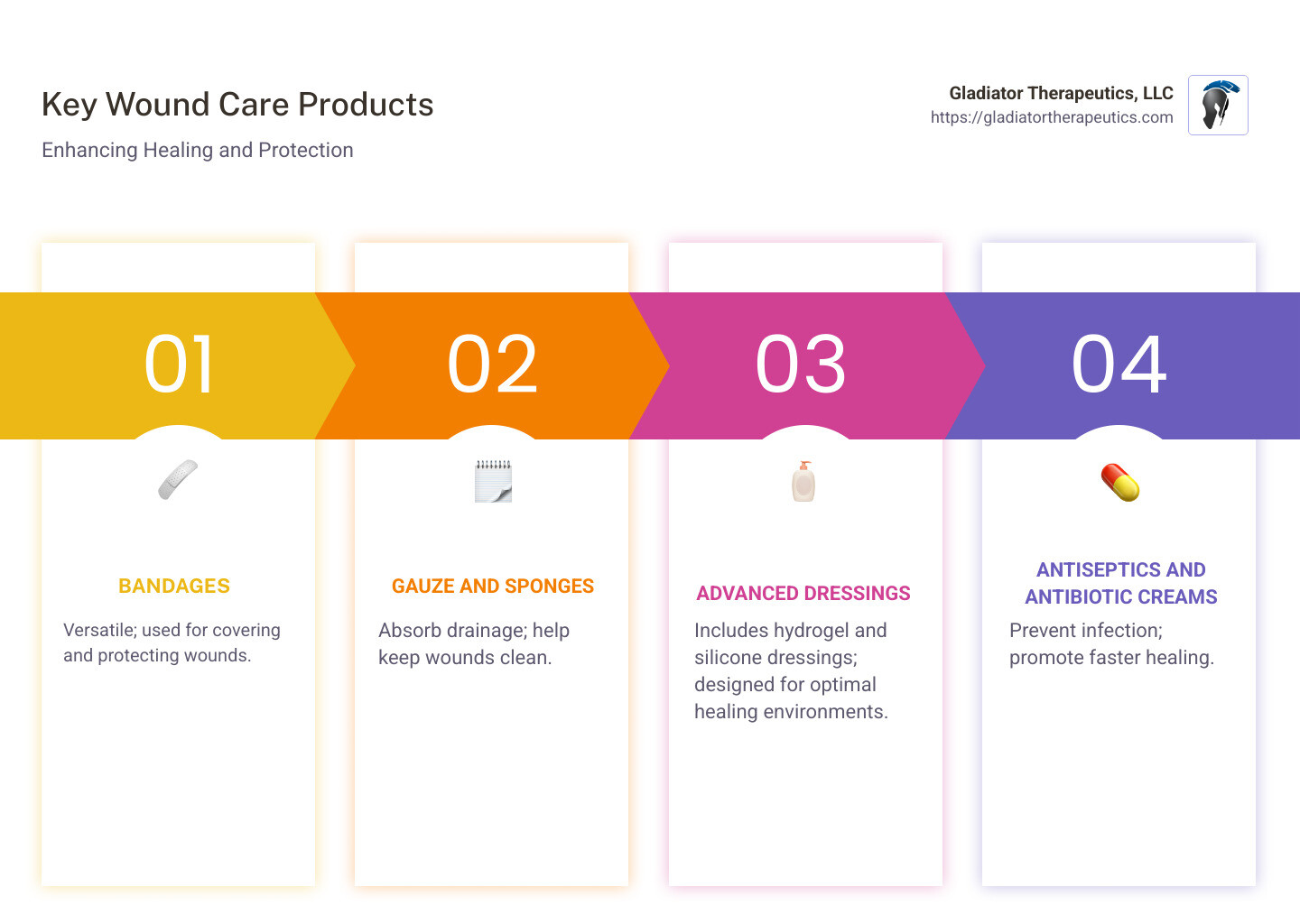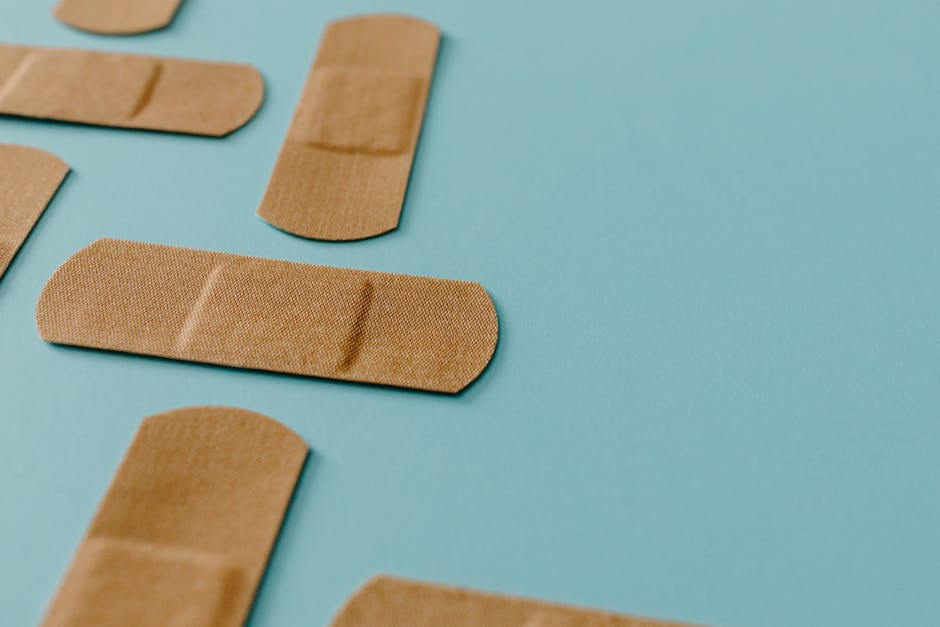March 14, 2025
The Importance of Wound Care Products
Wound care products are essential in promoting healing and providing protection for patients recovering from various injuries. Whether dealing with a minor cut or a more complex surgical wound, having the right products available can significantly impact recovery time and outcomes.
Here’s a quick breakdown of key wound care products:
- Bandages: Versatile; used for covering and protecting wounds.
- Gauze and Sponges: Absorb drainage; help keep wounds clean.
- Advanced Dressings: Includes hydrogel and silicone dressings; designed for optimal healing environments.
- Antiseptics and Antibiotic Creams: Prevent infection; promote faster healing.
- Hemostatic Agents: Aid in bleeding control; essential for immediate wound care.
These products are critical tools for healthcare professionals committed to improving patient care efficiently and cost-effectively.
As our understanding of wound healing progresses, so do the products designed to assist in that process. Companies are continuously innovating solutions that blend practicality and efficacy, often reducing healing time by substantial amounts. With chronic wounds affecting millions, effective wound care is not just ideal—it’s essential.
Explore how different wound care products meet specific healing needs and find novel technologies that are reshaping the field, leading to better and faster patient recovery.

Relevant articles related to wound care products:
– advanced wound care dressings
– types of wound dressing
– gauze and bandages
Types of Wound Care Products
When it comes to wound care products, understanding the differences between traditional and advanced options is crucial for effective healing. Each type serves a unique purpose and is suited to specific wound care needs.
Traditional Wound Care
Traditional wound care products have been the cornerstone of wound management for decades. They are reliable, cost-effective, and widely accessible.
-
Bandages: These are the go-to for covering and protecting minor injuries. From simple adhesive strips to elastic bandages, they help keep wounds clean and shielded from further harm.
-
Gauze and Sponges: Essential for absorbing drainage and maintaining a clean environment, gauze and sponges are used in various settings. They can be layered for added absorption or used with antiseptics to improve their effectiveness.
-
Antiseptics: These are crucial for preventing infections in minor cuts and abrasions. Products like iodine and hydrogen peroxide are commonly used to cleanse the wound area before applying a dressing.
Advanced Wound Care
For more complex wounds, advanced dressings offer specialized solutions that traditional products may not provide.
-
Hydrogel Dressings: These are ideal for maintaining a moist wound environment, which is essential for optimal healing. Hydrogel dressings can be soothing and are particularly beneficial for burns and dry wounds.
-
Silicone Dressings: Known for their gentle adhesion, silicone dressings like the ComfortFoam® series are excellent for sensitive skin. They minimize pain during dressing changes, making them suitable for patients with fragile skin.
-
Antimicrobial Dressings: Products like Cardinal Health™ AMD antimicrobial dressings with PHMB are designed to prevent bacterial growth. These dressings are crucial in managing wounds at risk of infection, such as chronic ulcers.

By choosing the right type of wound care product, healthcare providers can significantly improve healing times and patient comfort. Whether it’s a traditional bandage for a minor cut or an advanced silicone dressing for a surgical wound, each product plays a vital role in the healing journey.
Next, we’ll explore the top wound care products for effective healing, including antibiotic creams, antiseptic creams, and liquid bandages.
Top Wound Care Products for Effective Healing
When it comes to effective healing, choosing the right wound care products is essential. Let’s explore some of the top products that can make a big difference in both preventing infections and protecting wounds.
Gladiator Therapeutics’ Healing Creams
Gladiator Therapeutics offers a range of healing creams that are the first line of defense against infection, especially for minor cuts and abrasions. These creams work by creating a protective barrier over the wound, which is crucial for avoiding complications.
-
Healing Creams: Designed to support the natural healing process, these creams contain ingredients that help maintain a clean wound environment and promote skin regeneration.
-
Protective Barrier: The creams help cleanse the wound area and prevent infection by forming a barrier that keeps out harmful bacteria. They are particularly useful for cleaning wounds before applying a dressing.

By using these creams, you can significantly reduce the risk of infection, allowing the wound to heal more efficiently.
Gladiator Therapeutics’ Liquid Bandages
Gladiator Therapeutics’ liquid bandages are a versatile wound care solution, especially for tricky spots that are hard to cover with traditional bandages. They form a protective film over the wound, keeping out dirt and bacteria while allowing the skin to breathe.
-
Protection: These liquid bandages provide a waterproof seal, making them ideal for areas that are frequently exposed to moisture, like hands or feet.
-
Tricky Spots: For wounds in difficult-to-bandage areas such as knuckles or elbows, these liquid bandages offer a flexible and effective solution. They adhere well to the skin and move with the body, ensuring continuous protection.
These products are particularly beneficial for people who lead active lifestyles and need a reliable way to protect minor wounds while on the go.
By incorporating these wound care products from Gladiator Therapeutics into your first aid kit, you can ensure that you have the right tools for effective healing. Whether it’s a healing cream to ward off infection or a liquid bandage for those hard-to-cover spots, each product plays a crucial role in maintaining skin health.
Next, we’ll explore some of the most innovative technologies in wound care, including autologous solutions and algae-derived gels.
Innovative Wound Care Technologies
In wound care, innovation is key to enhancing healing processes and improving patient outcomes. Let’s take a closer look at some cutting-edge technologies that are making waves in this field.
Autologous Solutions
Autologous solutions are changing how we approach wound healing. One standout product in this category is ActiGraft PRO. This system uses the patient’s own blood to create a protective clot that jump-starts the body’s natural healing process.
Imagine applying a blood clot directly to a wound within minutes. That’s what ActiGraft PRO achieves by mixing fresh whole blood with a special coagulation powder. This innovative approach not only accelerates healing but also uses the body’s own resources, minimizing the risk of rejection or complications.
Thanks to its effectiveness, ActiGraft PRO has been a game-changer for treating diabetic ulcers and other chronic wounds across the globe.
Algae-Derived Gels
Another exciting advancement in wound care is the use of algae-derived gels. Traumagel is a prime example, known for its ability to promote rapid clotting. This gel harnesses the natural properties of algae to quickly form a barrier over wounds, stopping bleeding and providing an optimal environment for healing.
Algae-derived gels like Traumagel are particularly beneficial in emergency situations or for individuals with clotting disorders, offering a natural and efficient alternative to traditional clotting agents.
Compression Systems
Compression systems are vital for managing conditions like venous leg ulcers. A two-layer compression bandage system is designed to provide consistent pressure, improving blood flow and reducing swelling.
For those suffering from venous leg ulcers, these systems offer a reliable solution. By applying the right amount of compression, they help in reducing pain and speeding up the healing process.
Compression systems like this are essential tools for healthcare providers, offering a comfortable and effective way to manage chronic wounds and improve patient quality of life.
These innovative technologies are redefining the landscape of wound care, providing effective solutions for challenging conditions. Next, we’ll address some common questions about wound care products to help you make informed decisions.
Frequently Asked Questions about Wound Care Products
When it comes to wound care products, many questions arise about their effectiveness, cost, and availability. Let’s explore some of the most common queries to help you steer this essential aspect of healthcare.
What is the best product to help wounds heal?
Choosing the right product can significantly impact wound healing. Antiseptics are crucial for preventing infection in minor cuts and scrapes. Chlorhexidine is a popular antiseptic that kills bacteria on the skin and prevents infection. It’s often used in surgical settings and for cleaning wounds.
Hydrogen peroxide is another commonly used antiseptic. It bubbles up on contact with skin, which helps to remove debris and dead tissue from wounds. However, use it cautiously, as too much can damage healthy skin cells.
Does Medicare pay for wound care supplies?
Yes, Medicare can help cover the cost of wound care supplies. Medicare Part A typically covers inpatient hospital stays, which may include wound care services received during hospitalization. Medicare Part B covers outpatient care and may include doctor visits and certain wound care products prescribed as part of your treatment.
Medicare Advantage plans, offered by private companies, often provide additional benefits beyond Original Medicare, which can include coverage for more extensive wound care supplies. It’s always a good idea to check with your specific plan to understand what is covered.
How to get free wound care supplies?
For those in need, several organizations provide free wound care supplies. Debra of America supports individuals with epidermolysis bullosa, offering resources and supplies for wound care.
Project C.U.R.E. is another organization that helps supply medical products to those in need. They work globally to provide healthcare resources to underserved communities.
MedShare collects surplus medical supplies, including wound care products, and redistributes them to healthcare facilities in need worldwide. These organizations can be invaluable resources for those struggling to afford necessary wound care items.
Understanding these aspects of wound care can make a significant difference in managing wounds effectively. Whether it’s choosing the right antiseptic or accessing resources, being informed is the first step towards effective healing.
Conclusion
At Gladiator Therapeutics, we are committed to revolutionizing wound care with our innovative SemiCera® Technology. This non-powered, far infrared (FIR) technology is designed to accelerate wound healing and improve stem cell proliferation, providing a cutting-edge solution for complex medical challenges. Our approach not only improves patient outcomes but also aims to reduce treatment costs, making advanced wound care more accessible.
SemiCera® Technology offers a unique advantage by using the regenerative properties of FIR without the need for power sources or chemical interventions. This approach has shown promising results in various studies, including research conducted by independent scientists at the University of Central Florida College of Medicine. The study highlighted the effectiveness of our technology in speeding up wound healing, especially when used in conjunction with stem cell treatments.
Our technology is not just about faster healing; it’s about changing the way we approach wound care. By providing a non-invasive, drug-free option, we aim to minimize side effects and improve the overall patient experience. This aligns with our mission to improve quality of life for individuals dealing with difficult-to-treat conditions, such as chronic wounds.
As we continue to develop and refine our products, we remain focused on delivering solutions that meet the needs of healthcare providers and patients alike. Our commitment to innovation and excellence in wound care is unwavering, and we are excited to see how our advancements will shape the future of healing.
For more information on our wound care products and how they can benefit you, visit our Types of Wound Dressing page. Find how our technology can make a difference in your wound care journey.
- Tags:
- advanced stage

